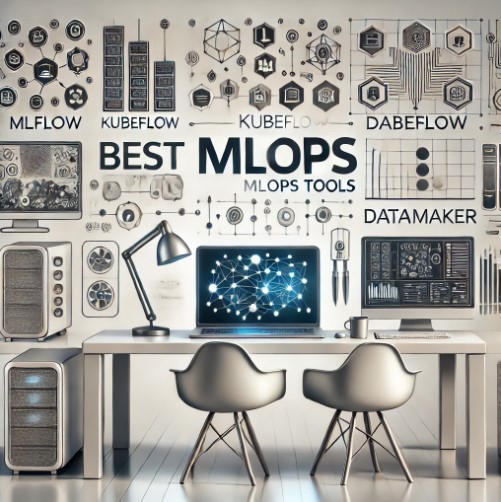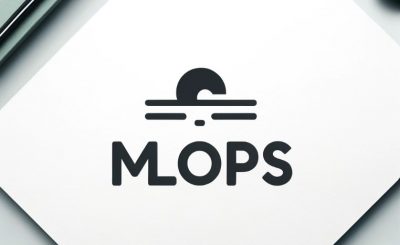Table of Contents
Introduction
Machine Learning Operations, or MLOps, is a critical aspect of integrating machine learning models into production. As organizations increasingly adopt machine learning, choosing the right MLOps tools has become essential for enabling seamless deployment, monitoring, and maintenance. The MLOps landscape offers a plethora of tools, each with unique capabilities, making it challenging for teams to decide on the best option. This guide explores how to choose MLOps tools that align with your team’s specific needs, ensuring efficient workflows, reliable model deployment, and robust data management.
Key Factors in Choosing the Right Best MLOps Tools
When evaluating MLOps tools, it’s crucial to assess various aspects, from your team’s technical expertise to the types of models you’ll manage. Here are the main factors to consider:
1. Team Expertise and Skill Level
- Technical Proficiency: Does your team include data engineers, DevOps professionals, or data scientists? Choose tools that align with their skill levels.
- Learning Curve: Some MLOps platforms require advanced technical skills, while others provide user-friendly interfaces for teams with minimal coding experience.
2. Workflow Compatibility
- Current Infrastructure: Ensure the tool integrates well with your existing infrastructure, whether cloud-based, on-premise, or hybrid.
- Pipeline Orchestration: Look for tools that support your workflow, from data ingestion and transformation to model deployment and monitoring.
3. Model Lifecycle Management
- Version Control: Track versions of data, code, and models to maintain reproducibility.
- Deployment Options: Evaluate how models are deployed and how easily they can be updated.
- Monitoring and Metrics: Choose tools that offer robust monitoring for model performance, allowing you to track metrics, detect drift, and retrain as needed.
4. Cost and Scalability
- Pricing Structure: Some tools charge by the number of models, users, or data processed. Make sure the tool fits your budget and scales with your team’s needs.
- Resource Requirements: Ensure the tool can handle your workload, whether you’re managing small-scale experiments or large production systems.
5. Security and Compliance
- Data Governance: Check for features like role-based access control (RBAC), data encryption, and audit logging to maintain data security.
- Compliance Requirements: Choose tools that meet regulatory standards, especially if you’re working with sensitive data (e.g., GDPR or HIPAA).
Popular MLOps Tools and Their Unique Features
Different MLOps tools offer unique functionalities, so understanding their core features can help you make informed decisions. Here’s a breakdown of popular MLOps platforms:
1. MLflow
- Features: MLflow is an open-source platform that offers tracking, project management, and deployment capabilities.
- Pros: Flexibility with various tools, robust version control, and open-source community support.
- Cons: Requires technical expertise and may lack some automation features for deployment.
2. Kubeflow
- Features: An MLOps platform based on Kubernetes, Kubeflow provides scalable model training and deployment.
- Pros: Ideal for teams already using Kubernetes, highly scalable.
- Cons: Has a steep learning curve and may require significant Kubernetes knowledge.
3. DataRobot
- Features: DataRobot automates much of the ML workflow, including data preprocessing, training, and deployment.
- Pros: User-friendly with extensive automation, suitable for business-focused teams.
- Cons: Pricing can be prohibitive, and customization options may be limited.
4. Seldon
- Features: A deployment-focused platform, Seldon integrates well with Kubernetes to streamline model serving and monitoring.
- Pros: Robust for model deployment and monitoring, with Kubernetes-native support.
- Cons: Limited functionality beyond deployment, requiring integration with other tools for end-to-end MLOps.
Steps to Select the Right MLOps Tool for Your Team
Step 1: Assess Your Current ML Workflow
Outline your ML workflow, identifying steps such as data preprocessing, model training, and deployment. This will help you see which tools fit naturally into your existing setup.
Step 2: Identify Must-Have Features
List essential features based on your requirements, like version control, monitoring, or specific deployment options. This will help you filter out tools that lack these capabilities.
Step 3: Evaluate Tool Compatibility with Existing Infrastructure
Consider whether you need a cloud-native, on-premise, or hybrid solution. For example:
- Cloud-Native: Tools like Amazon SageMaker or Google AI Platform may be suitable.
- On-Premise: Kubeflow or MLflow might be more appropriate if you need control over on-site data.
Step 4: Pilot Test Potential Tools
Select a shortlist of tools and run pilot tests to evaluate real-world compatibility, usability, and performance. For instance, test model tracking in MLflow or deployment with Seldon to understand how they fit into your pipeline.
Step 5: Analyze Long-Term Costs and Scalability
Calculate potential costs based on your model volume and future scalability needs. This helps in choosing a tool that supports both your current and projected workloads.
Step 6: Consider Security and Compliance
Review each tool’s security features to ensure compliance with data protection regulations. Prioritize tools with encryption, access control, and logging features if working with sensitive data.
Examples of Choosing MLOps Tools for Different Teams
Let’s examine how different types of teams might approach tool selection.
Example 1: Small Startup Team
- Needs: User-friendly, cost-effective tools with minimal setup.
- Recommended Tools: DataRobot for automated ML; MLflow for open-source flexibility.
Example 2: Enterprise Team with Kubernetes Expertise
- Needs: Scalable deployment, monitoring, and integration with Kubernetes.
- Recommended Tools: Kubeflow for seamless Kubernetes integration, Seldon for deployment.
Example 3: Data Science Team with Compliance Needs
- Needs: Robust data governance and secure access control.
- Recommended Tools: SageMaker or Azure Machine Learning, both offering extensive compliance support.
Frequently Asked Questions
1. What are the best MLOps tools for enterprises?
Large enterprises often benefit from tools that integrate with existing infrastructure and provide robust scalability. Some top choices include Kubeflow, MLflow, and Amazon SageMaker.
2. How can MLOps tools benefit smaller teams?
MLOps tools can automate repetitive tasks, improve model tracking, and streamline deployment, which is especially valuable for small teams without dedicated DevOps resources.
3. Is it necessary to use multiple MLOps tools?
Many organizations use a combination of tools to achieve end-to-end MLOps functionality. For example, MLflow for tracking and Seldon for deployment.
4. Can MLOps tools help with model monitoring?
Yes, many MLOps tools offer monitoring features. Seldon, for example, provides extensive model monitoring, while MLflow offers metrics tracking.
5. How do I ensure MLOps tools align with security standards?
Review each tool’s security features, such as encryption and role-based access, and choose those that comply with regulatory standards relevant to your industry.

Conclusion
Selecting the right MLOps tools for your team involves assessing your workflow, evaluating team expertise, and ensuring compatibility with your infrastructure. By following these steps, teams can choose tools that align with their specific needs, streamline model deployment, and ensure robust lifecycle management. Whether you’re a small team or a large enterprise, the right MLOps tools will empower you to efficiently manage, deploy, and monitor machine learning models, driving innovation and maintaining compliance in your AI projects. Thank you for reading the DevopsRoles page!
